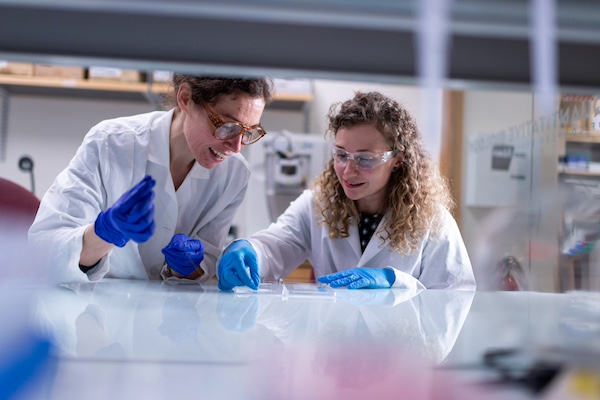Regenerative Biology is the Morgridge Institute’s inaugural research platform supporting the work of stem cell pioneer James Thomson. In 1998, Thomson successfully isolated stem cells from human embryos, creating not just a new field of science, but a new field of medicine. Thomson retired in 2022, cementing a legacy now being taken in exciting new directions by research leaders at Morgridge.
Today, Morgridge Investigator Kenneth Poss leads the Regenerative Biology Theme at Morgridge. The Poss Lab aims to elucidate the cellular and molecular mechanisms of innate regeneration in model systems like zebrafish, and to use this information to improve the poor regenerative capacity of human tissues like the heart, spinal cord, and limbs. The biology of regeneration remains both challenging and fascinating, and new discoveries have the potential to impact clinical outcomes of many diseases of organ damage, including heart failure, Alzheimer’s disease, and diabetes.
The Daniela Drummond-Barbosa Lab investigates the metabolic and physiological mechanisms that link the behavior of stem cells and their descendants to diet, stress, and other systemic inputs, using Drosophila melanogaster oogenesis as a model. Tissue stem cell lineages sense and respond to the external and systemic environments; the lab investigates the physiological, cellular and molecular in vivo mechanisms involved in this complex process. The lab has made major discoveries shedding light on a multi-organ network that tightly coordinates the germline stem cell lineage with whole-body physiology and diet.
The Phil Newmark/Melanie Issigonis Lab uses the tools of molecular cell biology and functional genomics to address several major biological problems using planarians, a type of flatworm with extraordinary regenerative capabilities, as a model. Researchers in the Newmark Lab seek to understand how somatic stem cells maintained in the planarian adopt specific fates, how it is determined which cells replace which elements of missing parts, and how those newly differentiated cells integrate with existing tissues and organs. Their research also endeavors to shed light on the biology behind schistosomiasis, a major neglected tropical disease.
The Stewart Computational Biology Group is driven by two goals: 1) Building foundational datasets, models, and algorithms useful to other researchers; and 2) Finding patterns in large datasets for establishing targets for further wet-lab analysis. To these ends, the team develops and utilizes algorithms for the analysis of large biomedical -omics datasets, including genomics, transcriptomics, epigenomics, multiomics, and bibliomics (biomedical text). Collaboration is at the heart of the team and, through the variety of projects, collaborates with researchers from Morgridge, the UW-Madison, and institutions around the world.








